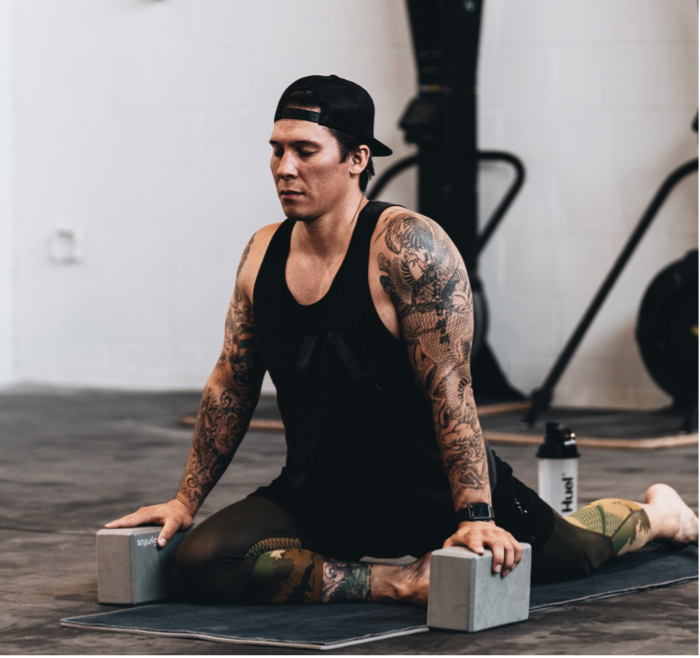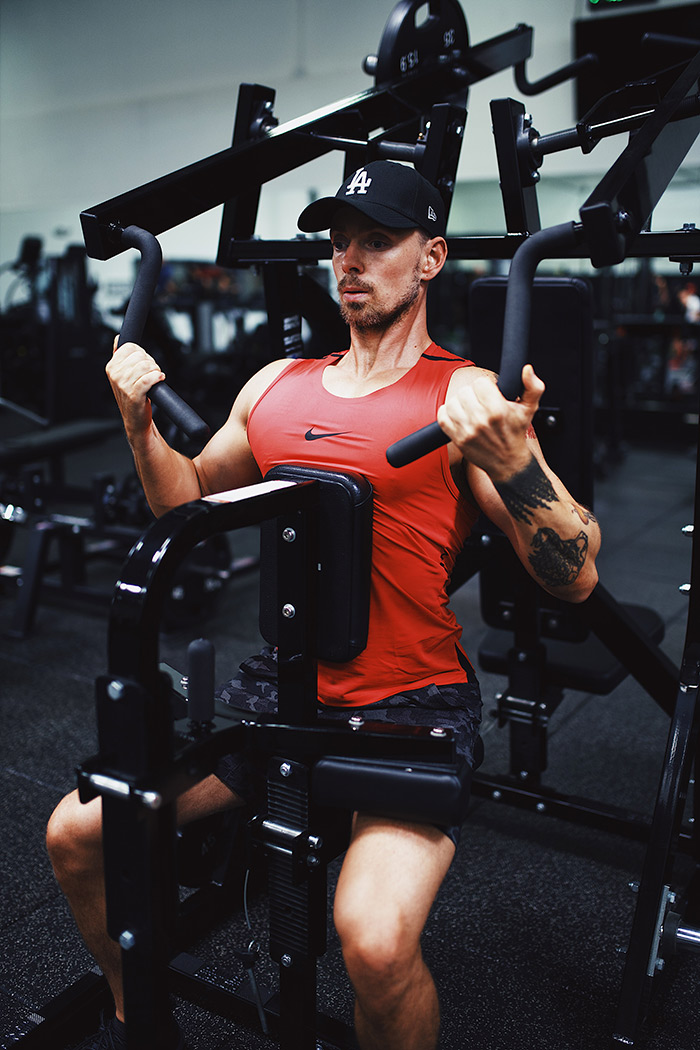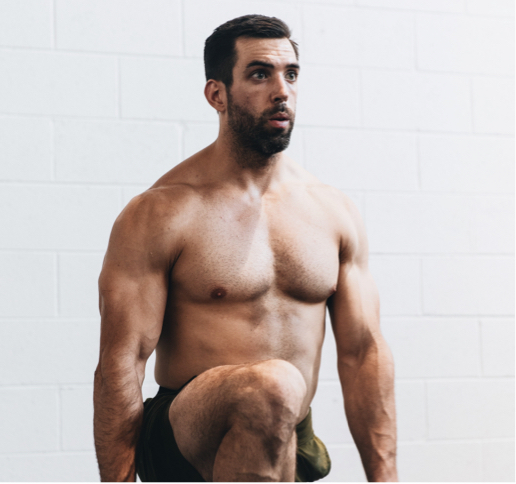Your Ultimate Guide to Home Bodyweight Training Equipment: From Yoga Mats to Vibration Plates
When it comes to bodyweight training at home, having access to the right equipment, however simple, can elevate your workouts and maximize results. In this comprehensive guide, we’ll explore the pros and cons of various equipment options, their ease of setup, and their suitability for different fitness levels.
Yoga Mats:
For centuries, yoga has been practiced on humble mats made of natural fibres. These have now ‘evolved’ into the colourful branded yoga mats you see toted about the trendiest neighbourhoods. While the exact origin of yoga mats is unclear, their popularity skyrocketed in the late 20th century as yoga gained widespread recognition for its numerous health benefits. Recent research has shown that practicing yoga on a mat can enhance balance, proprioception, and stability during poses (1).
Pros: Yoga mats provide a cushioned and non-slip surface, enhancing comfort and stability during exercises. They are versatile and suitable for various bodyweight movements, including yoga, Pilates, floor work stability training, calisthenics, progressive relaxation and balancing.
Cons: Some cheaper mats may wear out quickly and lack adequate thickness. Additionally, they may not provide sufficient grip for intense workouts.
Ease of Setup: Simply unroll the mat and you’re ready to go!
Suitability: Perfect for beginners, intermediate, and advanced exercisers engaging in yoga, Pilates, or floor-based exercises.
Bang for Buck: 10/10
Recover Fast Recommends: This yoga mat

Yoga Blocks:
Yoga blocks, those handy props used in yoga classes, I believe were first introduced by B.K.S. Iyengar, a renowned yoga teacher, in the 1960s. These lightweight and portable blocks have since become essential tools for yoga practitioners of all levels. They offer support, help maintain proper alignment, and enable deeper stretches. I use them as a tool in isokinetic exercises for the shoulder girdle. Studies have indicated that incorporating yoga blocks into your practice can enhance flexibility, increase muscle activation, and improve overall body alignment (2).
Pros: Yoga blocks offer support and stability, aiding proper alignment and enabling deeper stretches. They are lightweight, portable, and versatile for modifying exercises.
Cons: Some blocks may not be as sturdy or durable, potentially losing shape over time.
Ease of Setup: Place the blocks within reach for easy access during workouts.
Suitability: Beginners and intermediates benefit most from using yoga blocks to gradually improve flexibility and strength.
Bang for Buck: 10/10
Recover Fast Recommends: These yoga blocks
Suspension Training Devices (e.g., TRX System):
Developed by former Navy SEAL Randy Hetrick, the TRX Suspension Training System has revolutionized bodyweight training. Originally created to keep soldiers in top shape during deployments, suspension trainers have gained popularity among athletes and fitness enthusiasts worldwide. Recent research has highlighted the benefits of suspension training, showing improvements in muscular strength, endurance, and functional performance. The adjustable straps allow for endless exercise variations, targeting multiple muscle groups simultaneously (3).
Pros: Suspension trainers provide a full-body workout, utilizing bodyweight resistance and adjustable straps. They enhance strength, stability, and flexibility while engaging multiple muscle groups in challenging movement patterns.
Cons: Suspension trainers may require more space for setup and initial familiarization with exercises.
Ease of Setup: Anchor the straps securely to a door, tree, or ceiling mount.
Suitability: Intermediate and advanced exercisers seeking challenging bodyweight exercises and functional training.
Bang for Buck: 8/10 (5/10 if you go for the TRX brand)
Recover Fast Recommends: This suspension trainer
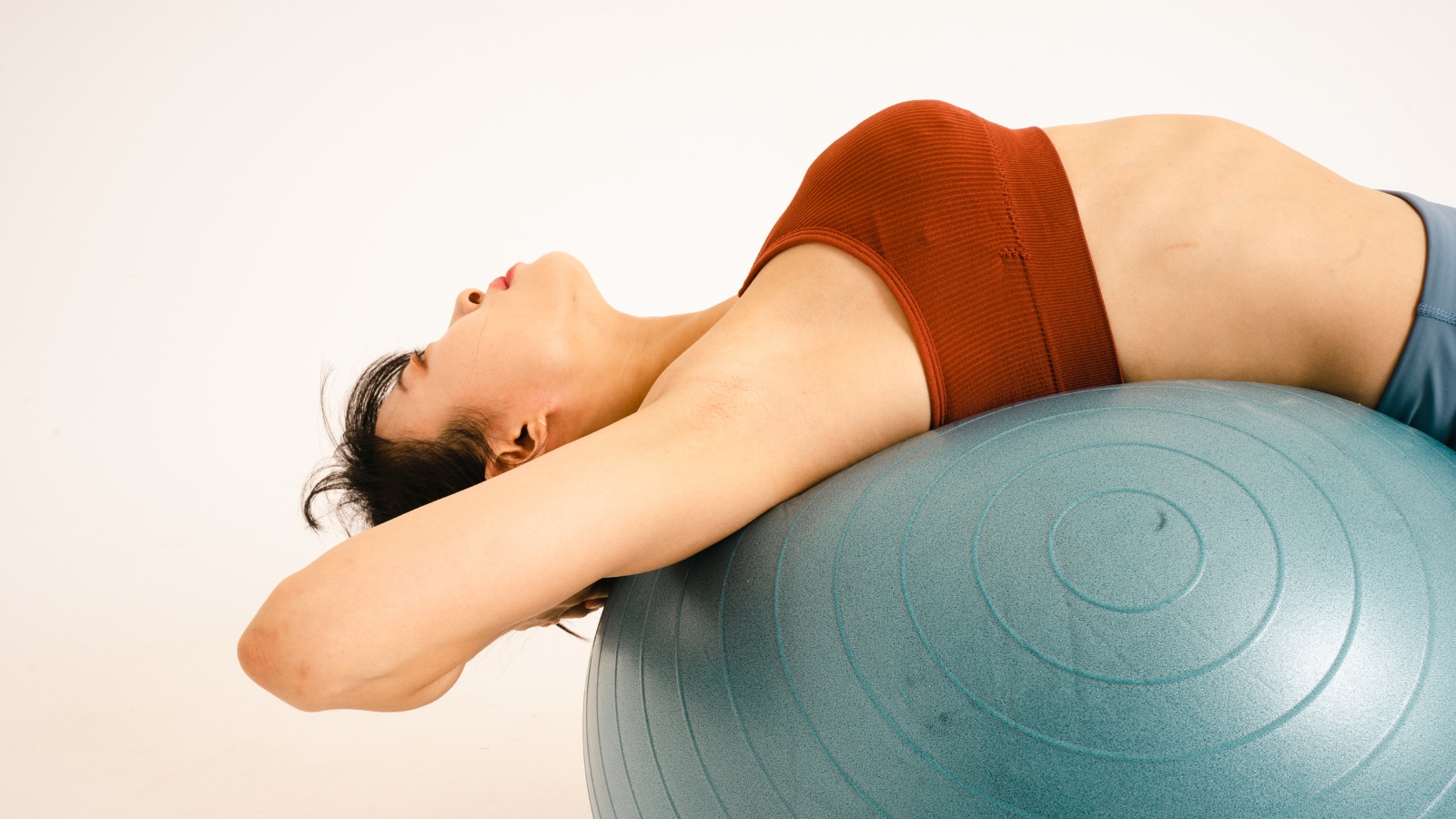
Physioballs:
Physioballs, also known as exercise balls or Swiss balls, have their history rooted in physical therapy. They were initially used as tools for rehabilitation exercises and improving balance. Over time, their versatility and effectiveness in engaging the core muscles became apparent, leading to their integration into mainstream fitness. Research suggests that Physioball exercises can enhance core stability, increase muscle activation, and improve balance, making them a valuable addition to home workouts (4).
Pros: Physioballs (exercise balls) improve core strength, balance, and stability. They offer a versatile platform for various exercises, including planks and stability-based movements.
Cons: Size options and durability can vary among different brands, so choose wisely.
Ease of Setup: As long as the ball is inflated to the correct size, all you need to do is position it for exercise.
Suitability: Suitable for beginners to advanced levels, with modifications available for different exercises.
Bang for Buck: 9/10
Recover Fast Recommends: This exercise ball
Therabands and Elastics:
Therabands and elastic resistance bands have a long history of use in physical therapy and rehabilitation settings. They were first introduced in the 1980s as a convenient and portable alternative to traditional weight machines. These bands offer variable resistance levels, often denoted by colour, making them suitable for individuals of all fitness levels. Recent studies have demonstrated their efficacy in improving strength, flexibility, and functional performance across different populations, including older adults and athletes (5).
Pros: Therabands and elastics provide resistance for strengthening exercises, improving muscle tone and flexibility. They are lightweight, portable, and ideal for targeting specific muscle groups.
Cons: Lower-quality bands may lose elasticity over time or feel too restrictive.
Ease of Setup: Simply secure the band or elastic around a stable anchor point or body part.
Suitability: Suitable for beginners to advanced levels, with different resistance levels available.
Bang for Buck: 8/10
Recover Fast Recommends: These therabands
Skipping Ropes:
Skipping ropes, a timeless and classic exercise tool, have been used for centuries as a means of cardiovascular conditioning and coordination training. They have found their place in various sports, such as boxing and CrossFit, due to their effectiveness in improving agility, endurance, and overall cardiovascular fitness. There is an abundance of research on how skipping rope exercises can significantly enhance aerobic capacity, muscular endurance, and bone density, making them a fantastic addition to any home workout routine (6).
Pros: Skipping ropes are excellent cardio tools, improving coordination, endurance, and calorie burning. They are compact, easy to store, and suitable for indoor or outdoor workouts.
Cons: Jumping rope may require some practice to maintain a steady rhythm and avoid tripping.
Ease of Setup: Unroll the skipping rope and find a suitable space for jumping.
Suitability: Beginners to advanced exercisers looking for an effective cardiovascular workout.
Bang for Buck: 10/10
Recover Fast Recommends: This skipping rope
Foam Rollers:
Foam rollers originated in the 1980s as a rehabilitation tool for physical therapy patients. They were initially used for self-myofascial release, a technique that aims to alleviate muscle tightness and improve range of motion. Over time, foam rolling has gained popularity among athletes and fitness enthusiasts as a means of preventing injuries, enhancing recovery, and optimizing performance. Research conducted in the last two decades supports the benefits of foam rolling, showing improvements in flexibility, range of motion, and muscle recovery (7).
Pros: Foam rollers and other devices like the peanut (pictured below) are great for self-myofascial release, reducing muscle tension, and improving flexibility. You can pretty much use any slightly deformable object with a rounded surface as a self-massage tool… think tennis ball or lacrosse ball. As ubiquitous as they are these simple tools can aid in muscle recovery and prevent injury by targeting dysfunctional segments of muscle fibres that people often refer to as knots and trigger points.
Cons: Some foam rollers may be too soft or too firm, depending on personal preference and specific needs. Finding the right density can be a trial-and-error process.
Ease of Setup: Simply place the foam roller on the floor and position your body for targeted rolling.
Suitability: Suitable for all fitness levels, from beginners to advanced athletes, for pre-workout warm-ups, post-workout recovery, and overall muscle maintenance.
Bang for Buck: 8/10 (10/10 if you just use a ball you have laying around the house)
Recover Fast Recommends: This foam roller
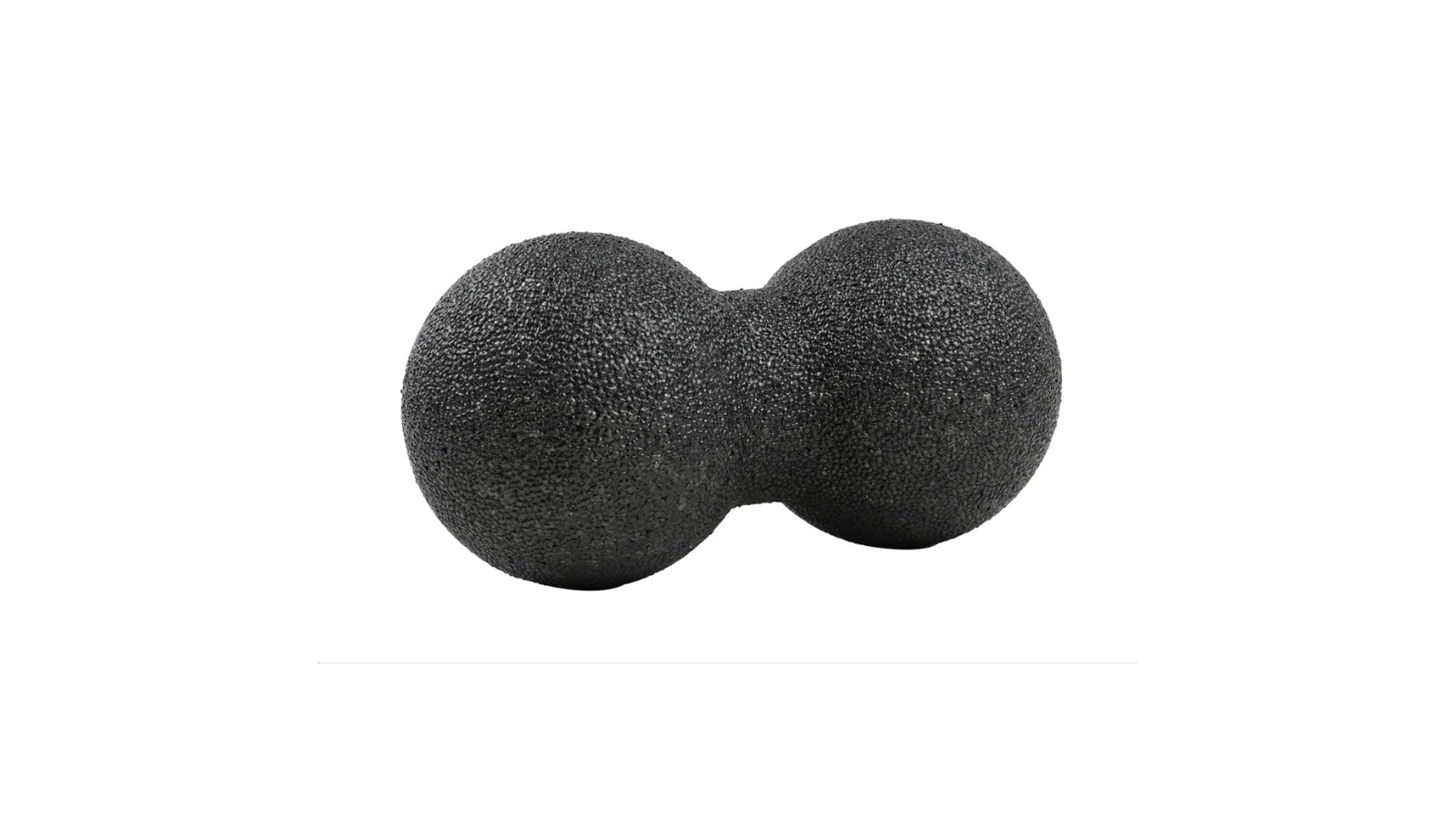
Pull-Up Bars:
The pull-up bar, a simple yet effective piece of equipment, has a history rooted in gymnastics and calisthenics. Its origins can be traced back to ancient Greece, where it was a staple in physical training. Today, pull-up bars come in various designs, including doorway-mounted, wall-mounted, or standalone options, catering to different spaces and preferences. Pull-up bars provide a challenging upper body workout and can aid in shoulder stability. Notably, research conducted over the past two decades has highlighted the efficacy of pull-up exercises in improving upper body strength, muscular endurance, and functional performance (8). Whether you’re a beginner or an advanced exerciser, incorporating a pull-up bar into your home setup can take your bodyweight training to new heights (pardon the pun).
Pros: Pull-up bars offer an excellent upper body and core workout, targeting muscles in the back, arms, and abdominal region. They come in various designs, including doorway-mounted, wall-mounted, or standalone options.
Cons: Installation may require drilling or mounting, which can be a drawback for some individuals.
Ease of Setup: Follow the instructions provided to install the pull-up bar securely in the desired location.
Suitability: Intermediate to advanced exercisers aiming to improve upper body strength and muscular endurance.
Bang for Buck: 8/10
Recover Fast Recommends: This pull-up bar
Inversion Tables:
Inversion tables, with their ability to turn your world upside down, have a fascinating history dating back to Africa and Greece. These ancient civilizations believed in the potential therapeutic benefits of inverting the body. Fast forward to the modern era, inversion tables have gained popularity, especially in Chiropractic, as a tool for spinal decompression, back pain relief, and improved circulation. Recent studies exploring the effects of inversion therapy have shown promising results, indicating reduced back pain, increased spinal mobility, and improved blood flow to the brain (9).
Pros: Inversion tables provide a unique way to decompress the spine, relieve back pain, and improve posture. They can also help increase blood circulation, reduce muscle tension and some people do abdominal exercises on them!
Cons: Inversion tables may take up a significant amount of space and may not be suitable for individuals with certain health conditions (consult a healthcare professional if unsure).
Ease of Setup: Follow the instructions provided to assemble and adjust the inversion table according to your needs.
Suitability: Intermediate to advanced exercisers seeking relief from back pain and improved spinal health.
Bang for Buck: 6/10
Recover Fast Recommends: This inversion table
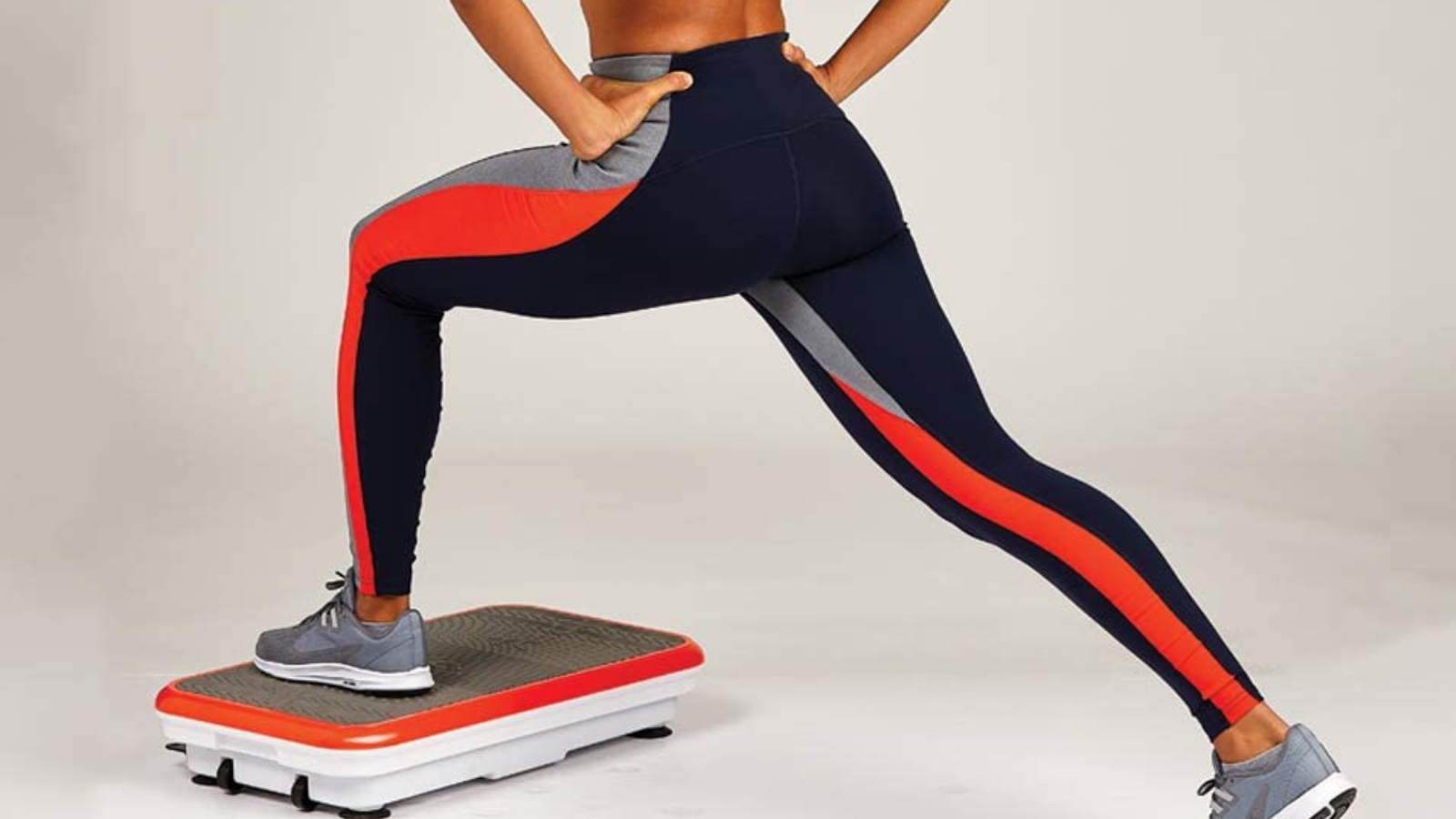
Vibration Plates:
Vibration plates, or whole-body vibration platforms, have emerged as a unique and innovative training tool in recent years. They generate mechanical vibrations that transmit energy to the body, resulting in involuntary muscle contractions and stimulating various physiological responses. While vibration training has been used in rehabilitation settings for decades, recent research has focused on its applications in improving muscular strength, power, flexibility, and balance. It has shown promising results across different populations, including athletes and older adults (10).
Pros: Vibration plates use whole-body vibration to stimulate muscles and enhance strength, flexibility, and circulation. They can be used for a variety of exercises or simply by standing on the platform for passive vibration benefits.
Cons: Vibration plates can be relatively expensive and may not be suitable for individuals with certain health conditions (consult a healthcare professional if unsure).
Ease of Setup: Plug in the vibration plate and select the desired settings for intensity and duration.
Suitability: Intermediate to advanced exercisers looking for an additional challenge and muscle activation.
Bang for Buck: 6/10
Recover Fast Recommends: This vibration plate
Remember, while these equipment options offer tremendous benefits, the most important aspect of any workout is consistency and proper form. It’s essential to listen to your body, progress gradually, and consult with a healthcare professional before starting any new exercise regimen. With the right tools and knowledge, you can create an effective and enjoyable home bodyweight training experience that aligns with your goals. So, grab your yoga mat, resistance bands, or suspension trainer, and let’s get started on your home bodyweight training journey!
References:
- Saper et al. (2017). Yoga in America: Prevalence, Health Benefits, and Challenges. American Journal of Preventive Medicine, 52(2), 220-226.
- Sharman et al. (2020). Use of yoga props: A cross-sectional study. Complementary Therapies in Medicine, 48, 102257.
- Ronnestad et al. (2019). Effect of adding bodyweight-based exercise to popular exercise modalities: A systematic review. Journal of Sport and Health Science, 8(1), 43-57.
- Oliveira et al. (2020). Effects of Stability Ball Training on Muscle Activation and Strength of the Core and Lower Limbs in Healthy Individuals: A Systematic Review and Meta-analysis. Sports Medicine, 50(11), 2069-2091.
- Colado et al. (2012). The effects of elastic resistance training on strength and power in physically active older people. European Journal of Applied Physiology, 112(11), 427-436.
- Santos et al. (2016). Effects of Jump Rope Training on Weighted Squat Jump Performance. International Journal of Sports Medicine, 37(10), 791-799.
- Healey et al. (2014). The effects of myofascial release with foam rolling on performance. Journal of Strength and Conditioning Research, 28(1), 61-68.
- Kockelman et al. (2020). Electromyographic analysis of the upper extremity during pull-up variations. Journal of Strength and Conditioning Research, 34(1), 140-146.
- She et al. (2021). Effects of inversion therapy on patients with chronic low back pain: A systematic review and meta-analysis. Pain Medicine, 22(3), 639-651.
- Marin et al. (2020). Whole-body vibration training and bone health in postmenopausal women: A systematic review and meta-analysis. Osteoporosis International, 31(5), 867-879.
Please note that the provided references are for informational purposes only and may not include the specific studies related to each equipment listed. The references serve as a general guide to support the benefits of related exercise modalities.
